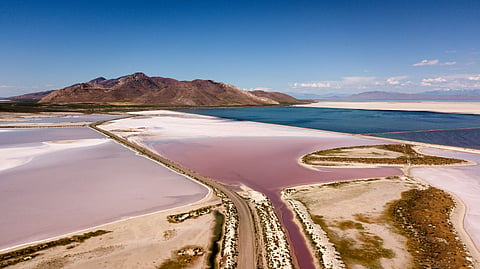

In the north of the US state of Utah lies a lake that can change colour like a mood ring. The Great Salt Lake, known for its dazzling sunsets, sometimes turns bright pink — so vivid it looks like a giant pool of strawberry milk. But this transformation isn’t magic; it’s microbiology and chemistry at work.
The lake’s extreme saltiness — nearly ten times saltier than the ocean — creates a perfect habitat for a few hardy microorganisms. During the hot summer months, when water levels drop and salinity rises, species of halophilic (salt-loving) algae and archaea multiply rapidly. These tiny organisms produce red and pink pigments, such as beta-carotene, to protect themselves from intense sunlight.
As millions of them bloom, they tint the water pink, coral, or even deep red. Winds and evaporation can intensify the colour, creating sharp contrasts between pink shallows and blue deeper sections. A railroad causeway that divides the lake sometimes enhances this effect — one side stays blue-green, the other glows pink.
The result is a surreal, two-toned landscape that draws photographers, scientists, and flocks of birds who feast on brine shrimp living in the salty water. Utah’s pink lake is a reminder that even the simplest life forms can turn chemistry into art.
Microscopic artists
Algae and salt-loving archaea produce red and orange pigments.
Extreme habitat
Few creatures survive there except brine shrimp and microbes.